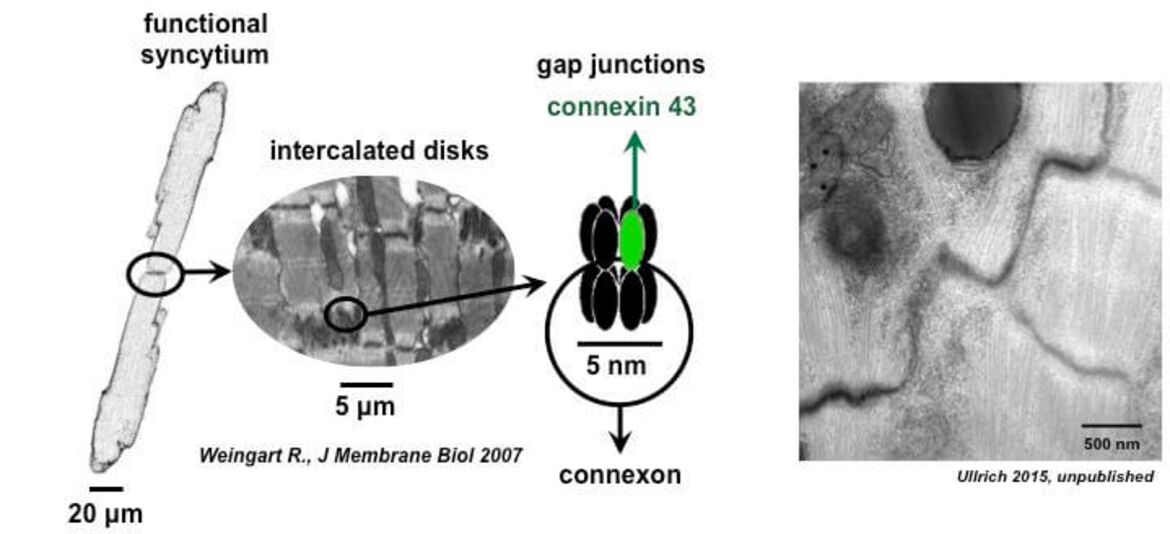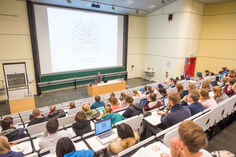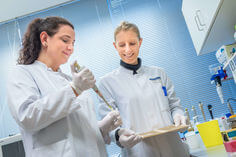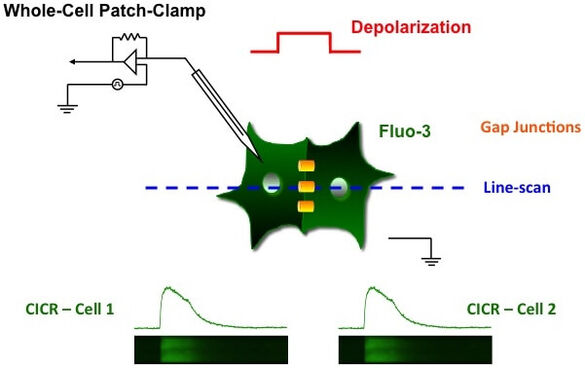- Institut
-
Herz- und Kreislaufphysiologie
- Markus Hecker
- Thomas Korff
-
Hugo H. Marti
-
Forschung
- Zelluläre und molekulare Mechanismen der postnatalen Entwicklung des zerebralen Gefäßsystems
- Die Bedeutung der molekularen PHD-HIF Achse für den akuten Schutz und die langfristige Regeneration nach einem ischämischen Schlaganfall
- Charakterisierung und gezielte Aktivierung von NRF2-abhängigen antioxidativen Mechanismen beim akuten Schlaganfall
- Extrazelluläre Nukleinsäuren als Trigger neuroinflammatorischer Prozesse in akuten und chronisch degenerativen Erkrankungen des Zentralnervensystems
- Neuroprotektion und Neurogenese
- Blut-Hirn-Schranke
- Publikationen
- Personal
-
Forschung
- Andreas H. Wagner
- Neuro- und Sinnesphysiologie
- Lehre
- Zentrale Einrichtungen
- Bernard Katz Lecture
- Stellenangebote
- Aktuelles
Intercellular Communication in Stem Cell-Derived Cardiomyocytes
In the light of novel treatment options for ischemic myopathies and arrhythmogenic diseases, the functional properties of newly developed cardiomyocytes derived from pluripotent stem cells are investigated and compared with primary cardiomyocytes at the cellular level and in multicellular preparations.
One critical shortcoming of these cells is their limited potential to connect with native cardiomyocytes in order to establish a functional syncytium.

Cardiomyocytes form intercellular gap junctions preferentially at the intercalated disks (ICDs). ICDs in SC-CMs, which are located at the end-to-end connections between cells, are shown in the elelctron photomicrograph.
We have recently shown, however, that single SC-CMs present cardiogenic characteristics in multicellular preparations cell-to-cell coupling is strongly compromised. Reduced coupling results in a strong reduction in electrical signal transmission and conduction velocity, which may increase the risk for the development of arrhythmias. In this project, we are interested in the mechanisms that control intercellular communication with the aim to enhance signal transmission in SC-CMs and to improve heterocellular coupling with native cardiomyocytes.
Illustration of the experimental setup to study intercellular coupling.
- Institut
-
Herz- und Kreislaufphysiologie
- Markus Hecker
- Thomas Korff
-
Hugo H. Marti
-
Forschung
- Zelluläre und molekulare Mechanismen der postnatalen Entwicklung des zerebralen Gefäßsystems
- Die Bedeutung der molekularen PHD-HIF Achse für den akuten Schutz und die langfristige Regeneration nach einem ischämischen Schlaganfall
- Charakterisierung und gezielte Aktivierung von NRF2-abhängigen antioxidativen Mechanismen beim akuten Schlaganfall
- Extrazelluläre Nukleinsäuren als Trigger neuroinflammatorischer Prozesse in akuten und chronisch degenerativen Erkrankungen des Zentralnervensystems
- Neuroprotektion und Neurogenese
- Blut-Hirn-Schranke
- Publikationen
- Personal
-
Forschung
- Andreas H. Wagner
- Neuro- und Sinnesphysiologie
- Lehre
- Zentrale Einrichtungen
- Bernard Katz Lecture
- Stellenangebote
- Aktuelles





